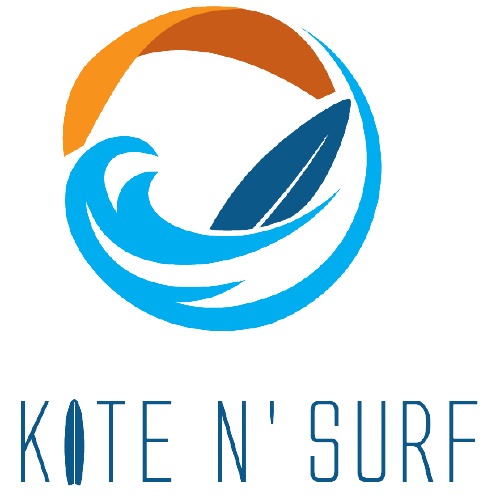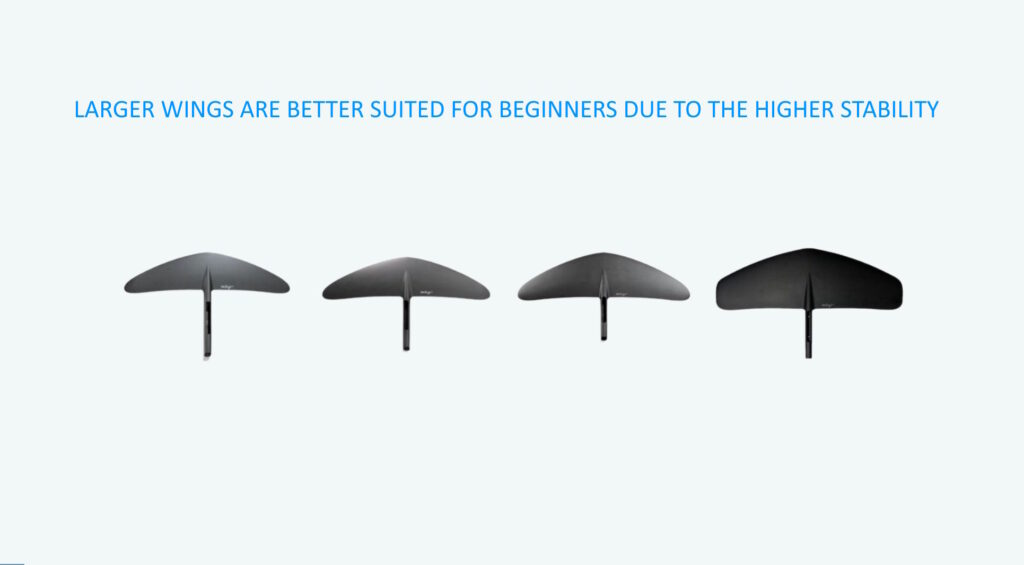
Suppose you check Things To Consider Before Buying An E-Foil In Dubai. One of the factors to consider in buying one of these sports toys is the wing, which is one of the single most crucial performance decisions you need to make when buying an eFoil. The efoil wings are critical for the stability of these personal watercraft, like the ones attached to the mast and its shape can be some of the significant causal factors to one’s whole eFoil riding experience. Since a rider’s takeoff and maximum speed, as well as, the control and carving performance of the plate craft can be determined based on the eFoil’s front wing (which usually possesses a curved-shaped top and a flatter bottom.) Hence, with its curved up and down nature, the wing can have more directional stability.
That said, it is essential to take into account the wing’s wide range of options for effectiveness, stability, and performance. Here at Kite n Surf, we’ll help you go over those factors to consider when buying eFoil wing to help you make an informed decision, starting with its surface area:
- Surface Area: All else being equal, the surface area of the front wing is a solid indicator of how much lift the wing will produce. It is generally expressed as the predicted surface area in square centimeters. If you hold a light directly over the wing, the projected area is the area of the wing’s shadow.
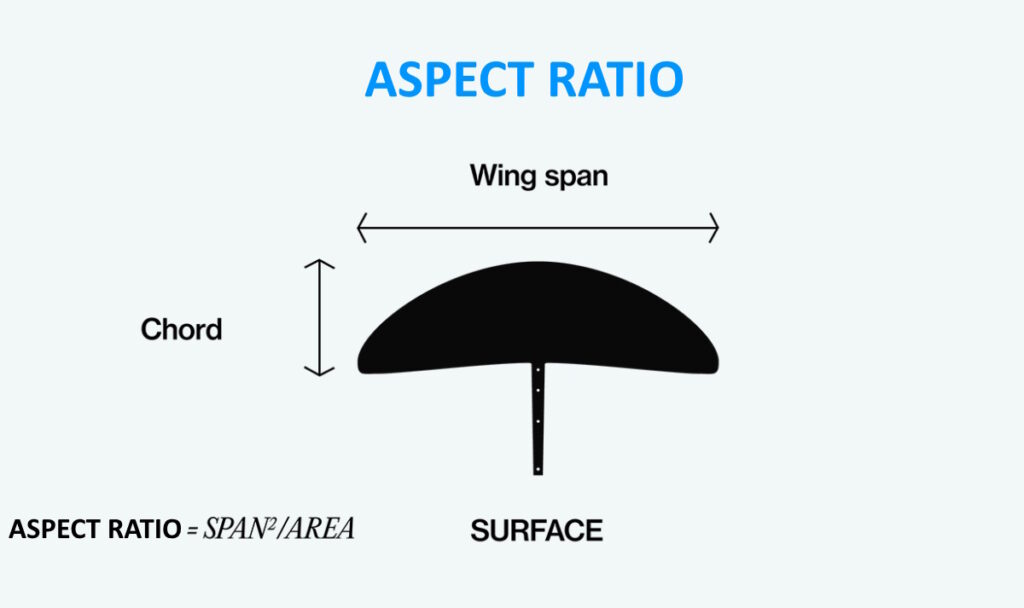
- Profile: While broader or thicker profiles are meant to provide more lift at lower speeds and are more tolerant to minor changes during flight, foils with thinner profiles are far more sensitive and need more skill to use, but once learned, they generate less drag and assent to faster speeds and are more susceptible to slight changes in the angle of attack for better agility.
- Wing shape: The aspect ratio of the wing, which can either be high or low, alludes to the ratio of its wingspan and mean chord – the distance between the wing’s leading edge and trailing edge of the wing. High aspect wings are broader and more slender, while low aspect wings are more stubby and fuller. In comparison, those with a high aspect ratio have longer, more robust wings, while those with a low aspect ratio have shorter, more slender wings.
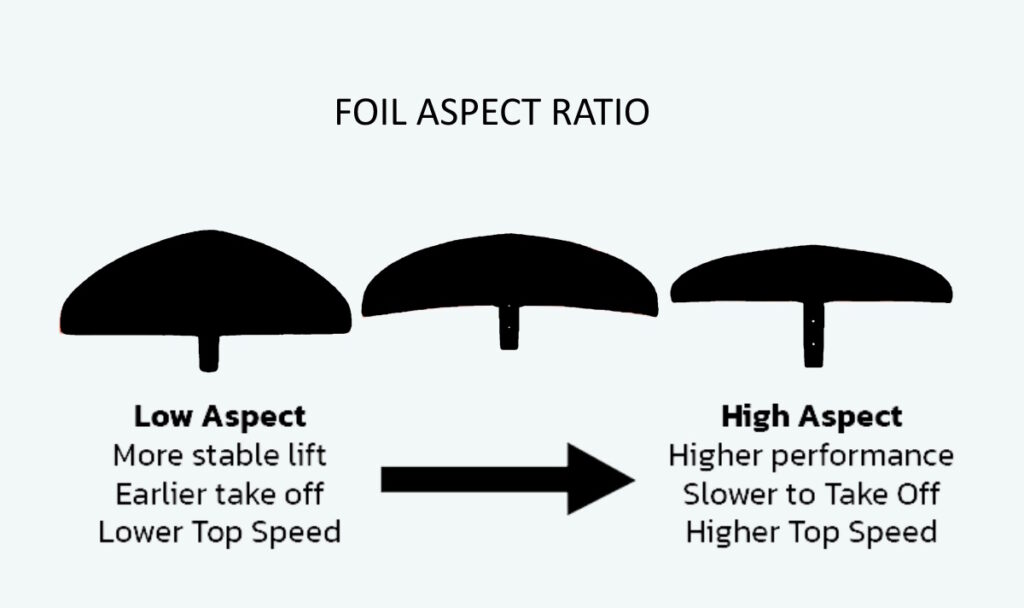
Due to its long, thin, and flat wings, a glider plane is an outstanding example of a wing form with a very high aspect ratio. This particular wing configuration offers the highest amount of lift from the given surface area while producing the least drag; thus, it is the most efficient of all the different wing configurations that are viable. It has good control at higher speeds but drops off the foil sooner while slowing down, is difficult to control at lower speeds, and can be more directional. Because of its increased surface area, high aspect eFoils require a higher level of wave control to be appropriately employed for pumping, notwithstanding their effectiveness. Meanwhile, a lower aspect wing has a wingspan to chord ratio of almost 2:1. They are often easier to use for beginners because they are easier to handle at lower speeds, can generate greater lift at lower pace, and are more predictable and tolerant to minor changes in angles of attack.
- Flat wing vs. Curved wing shapes: Another element to look into is the front wing curve. Curved wings have some inherent instability and nearly like to jump from one turn to the next, making them enjoyable to utilize for carving in the surf. The tips of the wings can also provide directional stability to the wing (similar to fins on a board), making the eFoil simpler to control. However, one drawback of these wings is that the tips do not generate as much upward lift since they have a smaller projected surface area than straight wings. A flat wing that generates upward lift even at the tips is more efficient, resulting in less drag.
- Tail wing shape, size, and angles: To balance it off, a bigger front wing is frequently combined with a bigger tail stabilizer wing. Generally, a smaller tail wing produces less lift and may necessitate greater back foot pressure to balance out the front wing, but it also makes the eFoil looser (easier to spin) and allows for a faster pumping motion. Tail wing forms are often comparable to front wings in that the same principles apply: high aspect is more efficient, low aspect is easier to control, and curved up or down wingtips give directional stability and can lessen turbulence off the wing tips. The angle of the rear stabilizer on some foils may be adjusted, allowing you to enhance or reduce lift without changing the size of the tail wing. A greater angle produces more lift at low speeds, whereas a smaller angle is easier to manage and less prone to breach at higher speeds.
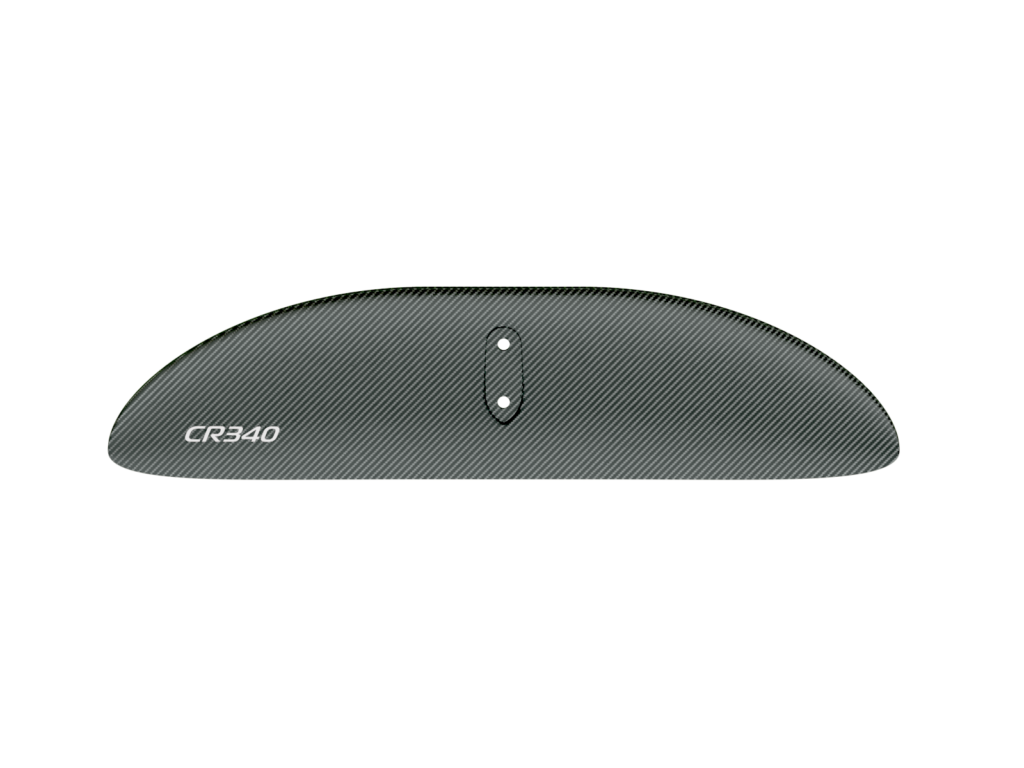
- Fuselage length: A longer fuselage, in most cases, makes controlling the pitch of the foil easier (keeping the foil flying at a steady altitude). Whereas a shorter fuselage is more sensitive to subtle weight changes and makes the flying level more complex, it also makes the foil looser, allowing tighter turns and more responsive, rapid pumping motions.
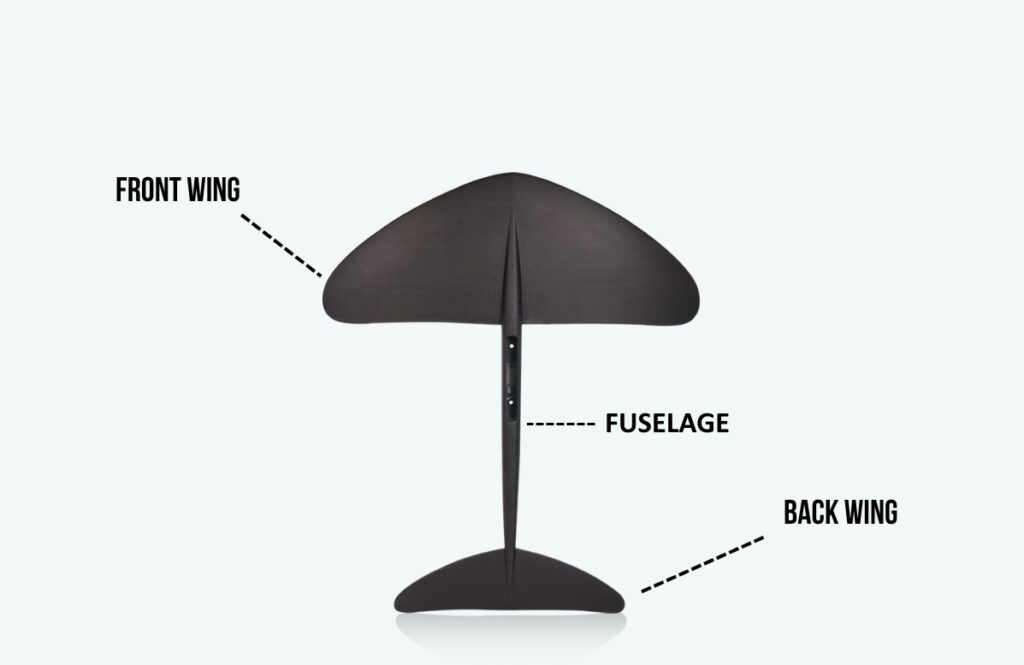
- Mast length: A longer mast often provides more clearance, allowing for steeper bends without the rails touching the water, more leverage and slower pumping motions (particularly on longer boards), and a smaller likelihood of breaching at higher speeds. A longer mast, however, has the following disadvantages: it feels more tippy, adds weight, flex, and drag, and makes capturing wave energy in smaller waves more difficult because the foil is deeper on launch. These masts are also more prone to contacting the bottom, necessitating deeper water locations. When you breach, the wipeout occurs from a higher elevation, which can be more dangerous.
Shorter masts are more stable and safer for beginners. Still, many advanced riders often favor them because they are easier to manage, allowing one to surf in shallower places, have less drag, and catch waves more readily. Pumping motions are shorter and faster when the mast is shorter. A larger base mast has less torsional flex than a narrow mast, which makes the foil more responsive, but it also makes the mast more directional at higher speeds, similar to a wide fin on a board. Flex in the mast, like flex in a fin, can help you load up the foil and make carving turns on a wave feel more dynamic and smooth, especially with smaller wings. When utilizing larger wings and longer masts, stiffer masts appear to perform better. Too much flex and bend in the mast and fuselage causes the foil to feel unsteady and difficult to control. A thicker profile mast is stiffer from side to side but also increases drag. Also, carbon masts, layup, and grade are crucial for obtaining side-to-side and torsional stiffness and strength – which is an excellent step from foil design to production.
So, here’s all the information you need for choosing the eFoil wing! Want to know more? You can head over to our electric foil shop in Dubai, and in case you are interested in booking your first eFoiling lesson or rent efoil board in Dubai , feel free to contact our team at 0558006363. Our friendly staff will be happy to assist you!

